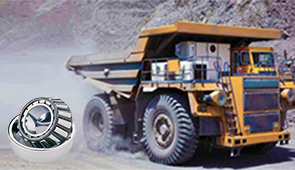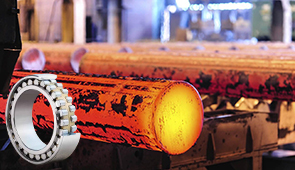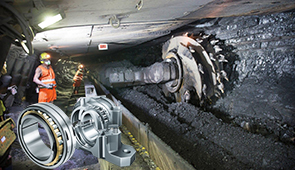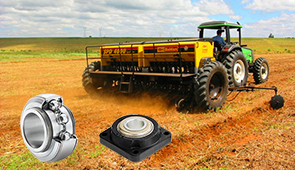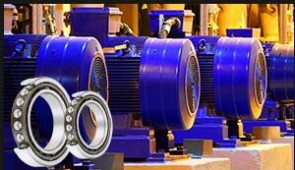The Function of a Machine Shaft in Mechanical Engineering
A machine shaft is one of the most fundamental components in the realm of mechanical engineering, serving as a critical backbone in countless mechanical systems. This article aims to demystify the purpose and function of a machine shaft, exploring its role in transmitting power and motion within machinery. By understanding the intricate details of this essential element, engineers and technical professionals can ensure optimal system performance and reliability. Whether you’re designing complex mechanical systems or maintaining existing equipment, gaining a comprehensive understanding of machine shafts is vital to achieving efficiency and precision in engineering applications.
Understanding Machine Shafts
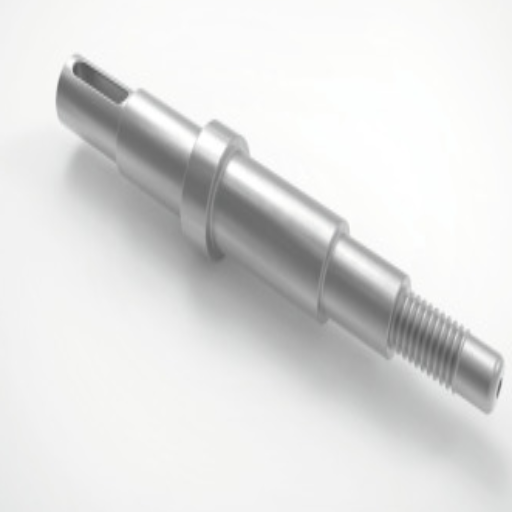
Definition and Importance of Shafts
A shaft is a mechanical element used to transmit power and rotary motion from one part of a machine to another. Their main job is to efficiently transfer torque and mechanical force while maintaining certain alignment and stability in the system. Shafts can be either solid or hollow and are generally cylindrical, which is ideal for responding to mechanical loads applied from different directions.
Shafts are one of the most important structural components in a large variety of mechanical systems. From cars to industrial turbines to minute machinery, shafts are responsible for transmitting smoothly the energy generated from engines, motors, or other sources to the application elements working on them, like gears, pulleys, or wheels-with adequate efficiency and minimal energy loss.
Engineers give priority to the design and material selection of shafts to ensure their durability, reliability, and performance throughout the changing operational parameters. Considering quite a few parameters, such as torque-carrying capacity, resistance to bending, and tolerance of stress concentration,s is required during designing. An effectively designed shaft ensures not only the efficiency of the machine but also prevents early wear or failure, which is of utmost importance when it comes to creating an environment of cost and safety for industrial and mechanical ventures.
Types of Shafts in Mechanical Engineering
Mechanical shafts are primary components that transmit force and rotational motion from one section of a machine to another. Generally, shafts in mechanical engineering are divided into three types, depending on the design and application: transmission shafts, machine shafts, and flexible shafts.
- Transmission Shafts: The function of transmission shafts is to transmit power between input and output members of the system, such as in gearboxes, engines, or industrial conveyors. Some examples are counter shafts, line shafts, and drive shafts. These shafts mostly operate under dynamic loads and require very fine alignments and strength of the material so as to withstand torsional stresses.
- Machine Shafts: Machine shafts are made an integral part of the machine itself, such as crankshafts, spindle shafts, etc. Unlike a transmission shaft, it is not an independent component; it is machined as a component of the assembly. For example, crankshafts in an internal combustion engine convert the reciprocating motion of the pistons into the rotary motion of the drive.
- Flexible Shafts: Such shafts are used when it is necessary to transmit power or motion around obstacles. They consist, or are covered, by layers of resilient materials to allow the section between any two points of support to bend while maintaining torsional integrity. Flexible shafts find their use in handheld tools, robotics, and small industrial systems where space constraints are paramount.
The choice of a particular shaft depends upon the operational criteria, which include load-bearing capacity, rotational speed, and working environment, all with the view to ensuring a long and happy life for the related mechanical system. They also involve the correct selection of materials and design modules, not to mention routine overhauls and maintenance.
The Role of Drive Shafts in Power Transmission
Drive shafts are among the most important components in power transmission systems, as they transfer torque and rotation from energy sources, such as engines or motors, to mechanical components such as wheels, axles, or gearboxes. They are meant to ensure near-perfect power transmission, withstanding stresses and power losses due to misalignment and changes in distance between the connecting parts. Below are five major points concerning drive shafts in power transmission processes:
- Material Composition: Drive shafts are built of a variety of materials, from steel to aluminum and carbon fiber. Steel drive shafts offer high strength and durability. Aluminum drive shafts weigh less, which is an advantage when low inertia is required. Carbon fiber shafts are expensive but offer tremendous strength-to-weight ratio and are immensely corrosion resistant.
- Torque Capacity: Depending on the application, drive shafts are designed to withstand various torque levels. For example, heavy-duty industrial drive shafts can bear torque over 15,000 Nm, whereas automotive drive shafts usually sustain 500 Nm to 2,000 Nm.
- Maximum Speed Capabilities: The speed limits of an operating shaft are crucial for its safe and efficient operation. A typical automotive drive shaft can go up to 5,000 rpm, whereas high-speed special applications for aerospace or turbine can cause speeds to go beyond 20,000 rpm.
- Length and Diameter: The length and diameter of a drive shaft are application-dependent. Longer shafts are mostly used for vehicles or any system with a long distance between the components and therefore require a larger diameter to retain their strength and avoid excessive vibration. For instance, commercial vehicle shafts may have a length between 5 and 10 feet and between 2 and 4 inches in diameter.
- Universal Joint Incorporation: Universal joints are a unique feature of a drive shaft, enabling it to flex and accommodate angular misalignment between connecting components. High precision universal joints made from case-hardened steel can operate at angular displacements of up to 25° without any significant loss in efficient power transmission.
Factored and combined from the materials and design considerations help modern drive shafts serve reliably and adaptably in many applications.
Functions of Machine Shafts
How Shafts Transmit Mechanical Power
Basically, shafts act as power-bearing elements in mechanical power transmission systems that efficiently transmit torque and rotational energy from one machine element to another. In short, the power source, such as an engine or an electric motor, converts energy into mechanical energy useful for various applications like pumps, compressors, vehicle drive systems, etc.
Typically, power transmission occurs through a shaft connecting to or mating with power transmission elements such as gears and pulleys, sprockets, etc., with a great emphasis on the alignment of all elements in the transmission path. The shaft’s performance is greatly influenced by the rate of rotation, the magnitude of torque, and its material properties. High torsional stress capacity under working and operational conditions is usually required when selecting materials, and thus high-strength material, such as alloy steels, is used; otherwise, it would be subjected to deformation or failure. In addition, the shaft undergoes some special treatment, such as nitriding or shot peening, to improve wear resistance, fatigue life, and durability.
Further aiding power transmission are some other engineering aspects, such as balancing to reduce vibrations and lubrication to reduce friction at bearing interfaces. These ensure machine shafts transmit power with minimal losses under dynamic loading conditions, even in harsh industrial environments. The evolution of shafts continues to meet the increased complexity of mechanical requirements through other innovations, such as hollow shafts for weight saving without compromising structural integrity.
Torque and Motion Transfer in Mechanical Systems
Torque and motion transmission thus stand as key-hand factors in modern mechanical system functioning, capable of imparting the energy to components with utmost efficiency and precision. Torque is the force of rotation exerted upon an object, which in principle defines the mechanical advantage and efficiency of a system of mechanisms. Depending on the range of torque and operating conditions, the torque is transmitted through shafts, gears, belts, or chains. Each method of transmission is generally designed to accommodate the specific torque application and operating conditions.
Keep in mind, gears help to change speed, direction, or torque values through different gear ratios, while belts and chains offer convenience through flexible connections between two distant components. Increasingly, such systems do use an assortment of precision materials, such as high-strength steels and advanced composites, to enhance performance under heavy loads or extreme temperature variations. With the onset of CAD and finite element analysis (FEA) techniques, manufacturers can study interactions between various components and optimize torque distribution to reduce mechanical losses.
Dynamic balancing, damping, and wear-resistant coatings all aid in ensuring reliable torque transfers even in the highest speeds and highest levels of vibrations. With smart systems on the rise, torque monitoring technologies, where sensors measure force data in real time, are also growing in popularity. These innovations allow for predictive maintenance, which extends the life span of critical components while reducing downtime. Ultimately, the dynamics that govern torque and motion transfer need to be mastered in present-day engineering, in which efficiency and durability are of utmost importance.
Assessing Stress on Shafts During Operation
Stress on shafts during operation is due primarily to the simultaneous action of torsional, axial, and bending loads. These stresses can be analyzed with FEA to reproduce real-life conditions and to provide a detailed understanding of how stress is distributed across the shaft for various operating scenarios. The applied torque causes torsional stress by distorting the cross-sectional area of the shaft, whereas radial loading produces bending stress in a direction along the longitudinal axis of the shaft. In addition to these stresses, there could be the effect of axial stresses arising from compressive or tensile forces acting along the length of the shaft.
Material characteristics of the shafts play a particular role in determining their tolerance to stress and failure points. Such factors include yield strength, resistance to fatigue, and surface flaws or inclusions, all of which would probably hinder performance under cycles of repeated loading and unloading. In the modern era, advanced materials such as high-strength steel alloys or composite materials are suggested for resisting static and dynamic loading. Monitoring such properties in-process stresses the importance of controlling quality so that no stress concentration points emerge that will subsequently act as initiation points for fatigue cracks and ultimate failure.
Modern sensor technology upgrades it for real-time stress analysis and performance checking of shafts while operating. This sensor data collection involves strain, displacement, and temperature change, thus enabling thorough predictive maintenance. Second, with the appearance of Industrial Internet of Things and machine learning algorithms, analysis of these datasets factors into stress-related failure prediction, maximizing downtime, and enhancing service life. Such a data-driven method aims at optimizing mechanical system design and operational efficiency and, most importantly, preemptively dealing with those stress factors to extend equipment life.
Applications Across Industries
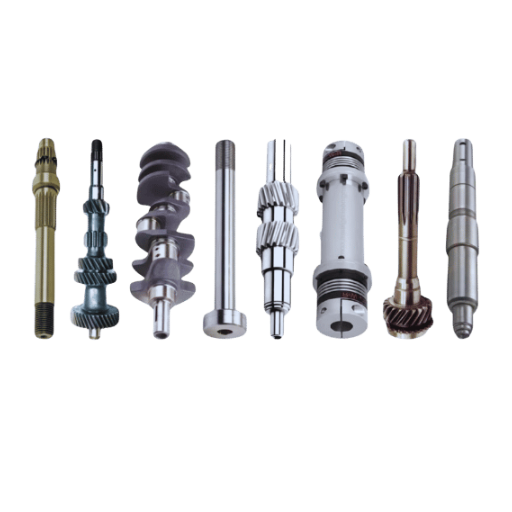
Automotive Industry: Drive Shafts in Vehicles
Drive shafts are one of those vital components in automotive design that actually transmit torque from the engine to the wheels to make the vehicle move. Modern vehicle drive shafts are designed, tested, and maintained using advanced techniques of predictive analysis and data-driven modeling. IIoT gadgets paired with machine learning algorithms empower real-time monitoring of torque distribution, rotational imbalance, and stress conditions. Potential weaknesses or failure points in the drive shaft are now immediately picked on and dealt with before the onset of mechanical troubles; this system prioritizes the safety of the vehicle and undesired downtime at a priority.
I shall also stress that technology has paved the way for the selection of materials for drive shafts. With computational simulations, modern materials, including high-strength steel alloys, carbon fiber composites, can be selected to maintain a delicate balance between weight reduction and durability. These advancements optimize the drive shaft under varying conditions of loads and speeds, which arise commonly in passenger and commercial vehicles. During the design stage, the application of finite element analysis (FEA) and fatigue testing further identifies means of predicting life under actual stress and performance.
More broadly, this incorporation of an innovative approach symbolizes the entire automotive industry leaping into Industry 4.0-based solutions meant to increase the reliability of all systems at large. Focusing on drive shafts, this new approach intends to elevate environmental amenity alongside mechanical amenity. Consider the fuel-friendliness ascribed to lightweight drive shafts bearing the same guise of advanced materials due to lowering vehicle weight. Predictive maintenance methods enabled by IIoT contribute to the economic benefit from the prevention of unexpected failures, thus cutting the wastage of resources in repairs—for manufacturers and consumers alike.
Manufacturing: The Role of Shafts in Machinery
Shafts are indispensable components in an array of machinery, transmitting power and torque effortlessly and allowing the functioning of respective mechanical systems. Their ability to be designed, selected as far as materials are concerned, and the precision with which they are operated all impressively emphasize shaft systems’ performance, life, and efficiency. Here is an insightful breakdown of five critical roles that shafts undertake in manufacturing machinery:
- Power Transmission: A shaft transmits mechanical power; the shaft thus transmits working power between various elements, varying from an engine to the wheels of an automotive system or varying from motors to the turbines in industrial applications. Theoretically, steel shafts rated for high torque can very well transmit about 5000 Nm of torque with the least amount of loss.
- Support Rotational Movement: The shafts support elements like gears, pulleys, and sprockets during rotational movement so that they move in unison in the assembly and civilly maintain the appropriate alignment for machinery outputs.
- Bearing Loads: During its operation, the shaft is designed to carry axial and radial loads. Advances in shaft technology and materials, such as the use of special alloy steels or composites, now allow shafts to carry loads of over 10,000 kg without failing.
- Damping Vibrations: The use of a flexible shaft design helps in absorbing and dampening vibrations caused during high-speed rotations, thereby reducing wear and tear on coupled components. This role propagates the lifespan of the machinery and renders it a dependable working machine even at high RPM.
- Application-Specific Design: Manufacturing shafts are custom-made to exact dimensions, surface finishes, and hollow profiles to suit specific applications. For instance, lightweight carbon-fiber shafts reduce energy consumption in aerospace machinery by around 30 percent when compared to traditional steel design.
The above roles evidently showcase the dynamic usage and engineering considerations in modern machinery applications, thus highlighting their significant role in industrial efficiency and performance.
Aerospace and Energy Production Applications
Shafts occupy a pivotal role in energy generation and aerospace sectors, passing mechanical power, converting precise motion, and elevating the efficiencies of systems. The design of shafts in these industries needs to consider aspects relating to material, structural integrity, and performance under extreme conditions. The following are five examples that demonstrate specific applications of shafts:
- Aircraft Propulsion Systems: Shafts connect turbines to compressors in aircraft propulsion systems. These high-performance systems, designed with light titanium or composite materials, have to withstand high centrifugal forces and promote efficiency in fuel consumption. For example, in advanced turbine shafts, it is possible to have a speed of up to 20,000 RPM while maintaining structural integrity.
- Wind Turbine Rotor Shafts: The rotor shafts of wind turbines pass on mechanical forces to generators from the wind that rotates the blades. Usually, the shaft is forged from strong carbon steel to counteract the opposing torsional fatigue due to the loading and unloading of wind forces. The design of the shafts can presently handle over 5 MW in offshore wind plants.
- Satellite Systems: These are specifically designed shafts providing controlled movement in satellite systems, such as the rotation of solar panels to capacity for energy absorption. These shaft alloys are engineered to be ultra-lightweight given the payload constraints, and are highly dependable in the vacuum of space.
- Power Plant: Steam Turbine Assemblies: Steam turbine shafts transfer kinetic energy from steam to the generator in power plants. The shafts have to bear high temperature and pressure, normally up to 600 degrees F and 3,500 PSI. The heat shielding alloy, such as chromium-molybdenum steel, will be used to take care of durability in such extreme environments.
- The main shafts of helicopters: Helicopter rotor shafts are groomed with tight tolerances to set up an ideal alignment between the engine and the rotor blades. The shaft has to resist axial and torsional loads during maneuvers in flight while being sufficiently lightweight to maximize lift efficiency. Induction hardening, among other treatments, is often applied to increase its working life.
By specially designing shafts to suit particular operational requirements-whether in terms of weight reduction, temperature tolerance, or fatigue resistance strides have been taken by engineers in the service of productivity and innovation in the aerospace and energy production industries.
Advantages and Disadvantages of Machine Shafts
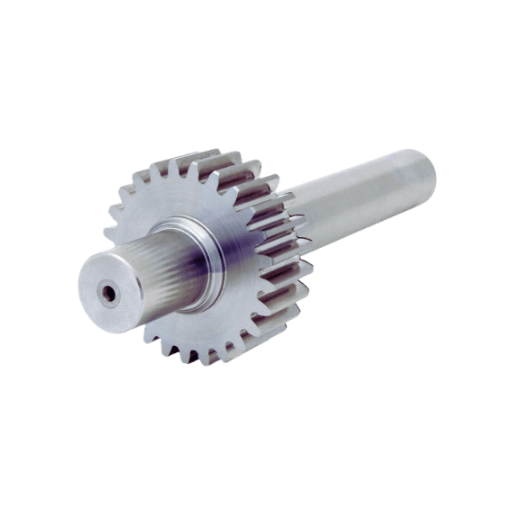
Benefits of Using Shafts in Mechanical Systems
- Efficient Power Transmission: Power shafts constitute an integral factor for the mechanical power to be transmitted commercially through a system. Basically, shafts are designed to transmit torque and rotational force from one unit, say, the motor, to others, such as a gearbox and turbines. This ensures a continuous energy supply and optimal operation of the system under intense demand.
- Durability and Reliability: Great shafts are made with state-of-the-art materials like alloy steel or carbon composites, giving them the perfect strength and durability. For instance, the surface induction hardening treatment further increases wear resistance so that its functionality under repeated stress cycles can be ensured over time. Studies reveal that shafts may actually perform for 50,000 hours, and only then would maintenance generally be considered.
- Customized for Specific Application: Shafts can be customized for a variety of operational requirements; they may either be altered in terms of size, provided with keyways, or configured as hollow shafts for saving weight. This makes applications across a broad range of industries, from automotive applications to the production of renewable energy, with engineering solutions defined for a given use case.
- High Load-Bearing Capacity: With high material properties and precision engineering, shafts can withstand axial and radial loads without excessive deformation. For example, modern turbine shafts are now being designed to withstand rotational speeds over 30,000 RPM while simultaneously withstanding immense forces without any structural or balancing problems.
- Smooth Operation and Less Vibration: Precision-balanced shafts minimize vibrations and rotational imbalances essential to smooth operation of the system. Reduced vibration therefore increases the overall efficiency of the systems as well as increases the lifespan of adjacent components such as bearings and couplings.
Thus, these advantages make shafts a critical element in mechanical systems, driving innovations across various disciplines while maintaining efficiency, dependability, and performance.
Potential Disadvantages and Limitations
Opposing in nature to a mechanical system, several limitations are placed upon machine shafts. The biggest concern is the fatigue of materials through repetitive stress, causing mechanical failures in time, especially under cyclic or dynamic loading conditions. If the situation arises that material is not selected properly or there is a flaw in the design, then the shaft suffers from a loss of structural integrity. Another issue is that corrosion and wear in a mechanical environment, especially with moisture, or chemical exposure, or even extreme temperature, will reduce the performance and may require frequent maintenance and replacement of shafts.
Shafts can also be a limitation if there is a misalignment, so that excessive loads are applied on the connected components, leading to premature damage of bearings, couplings, and seals. The misalignment may result from installation errors or deformations under load, further aggravating the operational failure risk. Another challenge would be the manufacturing precision and cost involved. To produce a superior shaft, it is usually highly machined and tested; this increases the cost of production and lead times.
Through understanding such possible drawbacks along with the use of modern design optimization, specialized installation techniques, and maintenance procedures, one might mitigate the dangers and improve the shafts’ working conditions in severe industrial applications.
Choosing the Right Shaft for Specific Applications
Choosing the right shaft involves careful evaluation of several variables that will slow the shaft operation, affect its life, and increase the price. The five main considerations when selecting a shaft are:
- Material: This is an important consideration as it determines the strength of the shaft, corrosion resistance, and wear resistance. To withstand high stress and environmental factors, alloy steels such as AISI 4140 and stainless steel are primarily used. According to one report, for said applications, alloy steel has been found to possess up to a 30% increase in tensile strength over mild steel, and thus it can be used for higher stresses than mild steel.
- Load-Bearing Capacity: An analysis must be done on the forces the shaft will face throughout its life, whether axial, radial, or torsional forces. For example, if a shaft has a torsional shear stress of 50 MPa, it will need to be designed having a safety Factor higher than 1.5. Finite element analysis tools will be highly beneficial in attaining accurate load calculations, thus avoiding unwise design features.
- Dimensional Requirements: Shaft dimensions—including length, diameter, and tolerances—will determine the shaft’s suitability with the rest of the mechanical assembly and operational requirements. Wrong alignments or wrong dimensions cause vibration, noise, and fast wear. Precision-ground shafts with tolerances as tight as ±0.0005 inches will be required for precision operations.
- Operating Environment: Consideration should be given to the environmental conditions, such as temperature limits, humidity, and exposure to chemicals. Marine applications shall have their shafts coated or constructed from materials resistant to saltwater corrosion, like duplex stainless steels, which excel in performance under such conditions.
- Manufacturing Constraints: The shaft should fit into budgets without compromising performance. More expensive materials coupled with exotic manufacturing procedures, like induction hardening or finish grinding, may bestow the shaft with surety in an application worthy of being considered. The decision to be made is balancing the longevity against the initial expenditure.
If the above factors are weighed systematically during selection, an engineer will be guided to the most logical outcome where a shaft is obtained for best performance for the exact requirements of the application.
Case Studies and Real-World Examples
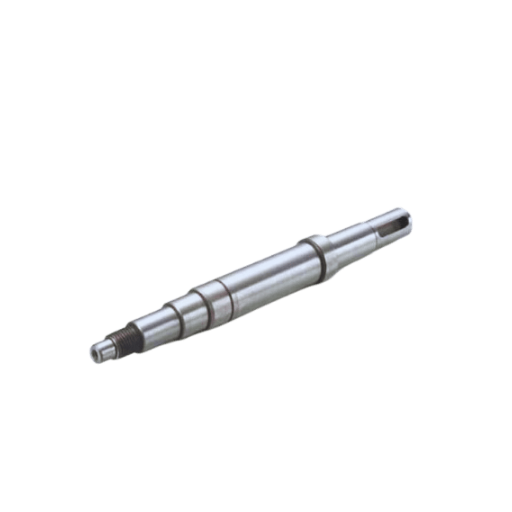
Lessons Learned from Shaft Failures
Failures in shafting systems happen when design idea errors are mixed with material defects. Usually, improper maintenance and operation beyond the considered stress threshold are also contributory factors. For instance, improper fabrication tolerances cause misalignment, which, in turn, increases stress concentrations, leading to premature wear or even sudden failure. Along the same lines, incorrect material selection, such as the one involving alloys with low fatigue resistance, seems to have been a recurring problem since the very early days of high torque applications.
Another important deduction that comes to mind whenever shaft failures are dealt with is the inspection and maintenance regime. Surface cracks or corrosion, staying undetected and sometimes aggravated by adverse operational environments, such as humidity or exposure to chemicals, have been among the factors leading to failure. This evidence gives important weight to applying NDT techniques to discover flaws before they grow.
From operation data, most shaft failures come from overloading or otherwise unusual sudden changes in rotational velocity. This confirms the need for an automatic monitoring system that tracks stress and vibration levels on a real-time basis to aid predictive maintenance.
Through detailed failure analysis and advanced diagnostic methods, industries can reduce the risk of shaft failure, improving system reliability and building components that can meet modern operational challenges under agreed safety and performance standards.
Future Trends in Shaft Design and Engineering
Advancements in material science, computational modeling, and manufacturing technologies have been influencing the emerging future of shaft design and engineering. One main trend involves the use of composites that present unmatched strength-to-weight ratios vis-à-vis traditional metals. These materials, when applied, heighten the operational efficiencies and reduce the weight of the systems, which is a significant factor in aerospace and automotive engineering.
Another growing trend is the use of digital twins in shaft design processes. Through such replicas of physical components, an engineer can simulate the effect of real-world conditions on the components with a fair degree of accuracy in predicting their performance and then optimize the design using this phase before production. This method saves a lot of cost in prototyping and ensures designs that will stay strong under the dynamic stresses of operation.
In addition, additive manufacturing (3D printing) is further disrupting the shaft manufacturing industry by creating possibilities for complex geometries that were not possible earlier using traditional methods. This enables the creation of lightweight and tailored designs without compromising the structures. Besides, surface engineering techniques, such as laser cladding or plasma nitriding, are being used to improve wear resistance and shaft life under harsh operating environments.
Finally, embedding IoT-enabled sensors inside the shaft for monitoring, like torque, vibration, and temperature, is becoming increasingly popular. The availability of such actionable information will help cement predictive maintenance schedules and greatly minimize the chance of catastrophic failures via speedily delivering insights on the health of components. Together, these technologies have reformed how shafts are designed and constructed, taking into consideration the greater performance requirements from modern engineering systems.
Frequently Asked Questions (FAQ)
Q: What is the main function of a machine shaft?
A: The function of a machine shaft is to transmit torque and rotational motion from a power source, such as a motor or engine, to various mechanical components like gears and pulleys. This allows for the effective operation of machinery, facilitating the conversion of power into mechanical output.
Q: How do shafts facilitate power transmission?
A: Shafts are used to transmit power from one part to another within a machine. By connecting the driven component to the power source, the shaft can help produce power to a machine, ensuring that all connected mechanical parts operate in harmony.
Q: What materials are machine shafts typically made from?
A: Shafts are typically made from high-strength materials such as alloy steel, including chromium-vanadium steel and nickel. These materials are chosen for their durability and ability to withstand the stresses and strains experienced during operation.
Q: How does a rotating machine shaft help with speed and torque?
A: The function of a machine shaft is to transmit torque from the power source while allowing for different speeds of operation. By maintaining proper alignment, the shaft ensures efficient transfer of energy, which is crucial for the performance and longevity of the machine.
Q: What are solid shafts and their advantages?
A: Solid shafts are typically made from a single piece of material, which provides strength and reduces the risk of failure under load. They are effective in transmitting power without significant tear on the components, making them ideal for heavy-duty applications in mechanical engineering.
Q: How does shaft alignment affect machine performance?
A: Proper alignment of the shaft must be maintained to ensure efficient power transmission. Misalignment can lead to increased vibrations and wear on the components, ultimately reducing the performance and longevity of the machine.
Q: What is the role of shafts in reducing vibrations?
A: Shafts are designed to minimize vibrations during operation, which helps improve the overall performance of the machine. By using materials and designs that absorb shock, the shaft can contribute to smoother operation and reduce wear on connected mechanical parts.
Q: What processes are used to produce machine shafts?
A: Shafts are usually produced using processes such as cold drawing or turning, followed by grinding. These methods help achieve the required dimensions and surface finish necessary for proper function in transmitting power from one component to another.
Q: What are the disadvantages of using shafts in machinery?
A: While the function of a machine shaft is critical for power transmission, there can be disadvantages such as potential for wear over time, which may lead to failure if not properly maintained. Regular inspection and adherence to standards and regulations can help mitigate these issues.
UCTH213-40J-300 with Setscrew(inch)
CNSORDERNO: Normal-duty(2)
TOGN: UCTH213-40J-300
SDI: B-R1/8
SD: 2 1/2
UCTH212-39J-300 with Setscrew(inch)
CNSORDERNO: Normal-duty(2)
TOGN: UCTH212-39J-300
SDI: B-R1/8
SD: 2 7/16
UCTH212-38J-300 with Setscrew(inch)
CNSORDERNO: Normal-duty(2)
TOGN: UCTH212-38J-300
SDI: B-R1/8
SD: 2 3/8
UCTH212-36J-300 with Setscrew(inch)
CNSORDERNO: Normal-duty(2)
TOGN: UCTH212-36J-300
SDI: B-R1/8
SD: 2 1/4
UCTH211-35J-300 with Setscrew(inch)
CNSORDERNO: Normal-duty(2)
TOGN: UCTH211-35J-300
SDI: B-R1/8
SD: 2 3/16
UCTH211-34J-300 with Setscrew(inch)
CNSORDERNO: Normal-duty(2)
TOGN: UCTH211-34J-300
SDI: B-R1/8
SD: 2 1/8









